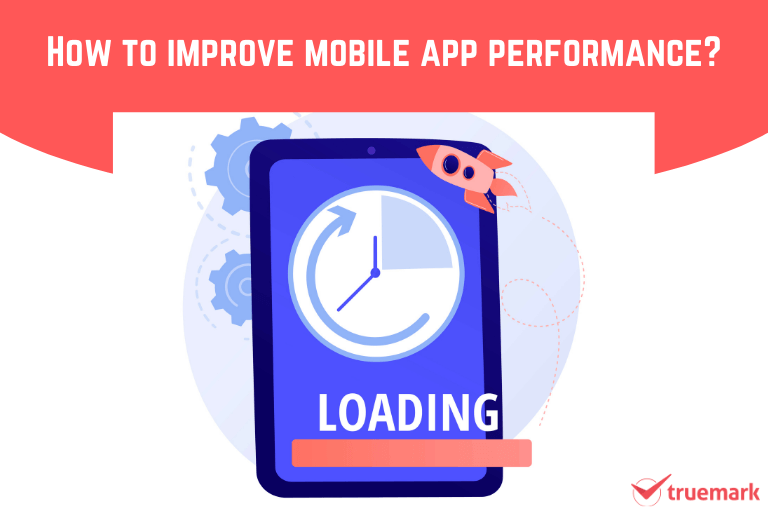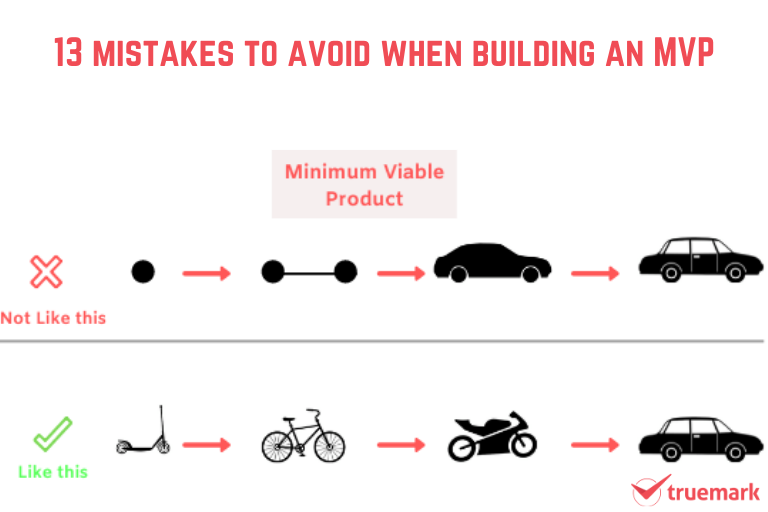What do you think is the first thing that the users notice in an app? Is it the color, logo, or user interface? Wrong if you guessed these. The correct answer is the loading time. If an app takes too long to load, then 70% of users switch to another app. The better your app performs, the more it will be successful. Since billions of people use mobile devices, improving mobile app performance has become one of the sure shots for companies to succeed.
As focusing on quality, features, and security is important, the app’s performance is equally essential. While you are focusing on other aspects, your competitors will gain success while you will be falling behind and seeing your downfall if you ignore performance.
So, if you are wondering how to improve mobile app performance, then stay tuned. We will talk about why and how to do it.
First, let’s understand why mobile app performance optimization is essential.
Why improving mobile app performance is important
The app that takes a long time to load is deleted immediately since it has already failed to impress the users. By this time, the users’ expectation falls. Their first impression will be like, “Taking too long to load. I don’t think it is useful. So, let’s just uninstall it.” In a competitive market such as this, where there are billions of apps on the Internet and getting exposure is tough, even a minor flaw in an app’s performance affects the user experience, minimizing the success rate. Even a second delay becomes a huge disadvantage for a business.
Since our daily lives are incomplete without mobile apps, we want a seamless user experience. We want apps to load faster. That is why the businesses are trying to take the standards to the next level, bringing new apps outshining the existing ones in terms of performance. So, the focus now has shifted towards improving the app’s performance.
You can see the statistics below that show you the importance of mobile app performance.
- Only 9% of users stay on a mobile app with a poor user experience.
- Overall app performance frustrates 52% of users.
- If an app takes more than three seconds to load, 43% of users will be unhappy.
- Poor mobile experience negatively affects 65% of users’ opinions about brands.
Optimizing mobile apps’ performance has become an all-out war among the companies in the world. Those who provide a better mobile experience stand at the top. They will have higher user engagement and retention, boosting the overall growth and success. of a business.
How to improve mobile app performance?
Undeniably, the mobile app industry has become one of the biggest industries in the world. Now, 70% of digital time is consumed by mobile apps. So, a better user experience with top-notch performance should be the top priority of every business.
So, here are the best ways to improve mobile app performance.
Reduce the application size
We cannot deny that most of the users use Android devices with low-end specifications. Downloading an app with a huge size is something they cannot afford because the device won’t support them. Even if they do install, it will be laggy and they will face latency problems. That is why most users generally stay away from downloading large-sized apps.
There are high-end smartphones as well, but not everyone can afford them. Still, many users experience a choppy feeling while using large-sized applications. So, the developer should try to minimize the app’s size as much as possible.
The app that consumes less storage performs better.
Optimize images and videos
The app with images and videos performs slower than with text because they load slowly. But, we also cannot deny the fact that they make an app interactive, help create stunning UI, and enhance UX. Using low-quality images is out of the option. So, the best way to improve performance is to optimize images and videos. Numerous tools compress images and videos without hampering the quality. Examples- Smush Pro, ShortPixel, etc.
Focus on core features
Having more features on your app doesn’t always mean your app is better. Featured-riched applications sometimes fail to deliver a better user experience because there is too much going on with them. They have to load everything faster. Unable to process everything quickly and handle users’ requests, they sometimes become slow, lag too much, and crash ultimately. And there is another disadvantage- an increase in the app’s size.
Having few features means less app size, less memory usage, and better performance. So, focus on core features and remove unnecessary ones.
Effective caching
The use of effective caching is another best way to improve app performance. You use your mobile devices every day every time. When using mobile apps, your data are stored either in your storage or RAM. As a result, your apps perform faster because your app doesn’t need to connect with the server or database every time you use it to load the content. If you have everything locally, then you can access the data to run the app immediately, loading it quickly.
However, storing every data is also not good because it consumes storage. So, it is a must to use caching effectively and efficiently.
Clean coding and effective use of libraries
One of the biggest causes of low performance is the coding practices of developers. Sometimes, they prefer lengthy code when the same scenario can be fixed in a few lines. Sometimes, they fail to follow guidelines. And other times, they use libraries from untrusted sources or without knowing their limitations.
An app’s performance depends on how you code and the libraries, APIs, etc., you use. So always focus on clean and healthy coding and quality.
Batch calls
Building an app means you will be working on the backend, which also means your app needs to connect with the server to request data. And to make the communication between client and server easier, APIs are used.
Whenever you need to request something from a server, API acts as a bridge. However, calling an API repeatedly affects the app’s performance because the app utilizes most of its resources to connect and retrieve data from the server. So, instead of calling an API every second for every small call, it is best to use batch calls. Batch calls mean multiple API calls are integrated as one and called. One of the biggest advantages of it minimizes overloads and traffic, contributing more to the app’s performance.
Use Content Delivery Network (CDN)
CDN is a group of distributed servers whose goal is to deliver content to the users no matter where they are located. So, you might be wondering how it helps improve an app’s performance. It generally uses caching, where it downloads and stores content that you need from the origin server to provide content more quickly, preventing a delay.
Let’s understand with an example. You are on Google to search for a product using a keyword. While using it, you might have realized the pagination is highlighted in green color, usually. This means the content you need from the following page has been loaded already. CDN does this for you.
Big companies like Facebook, Google, Microsoft, etc., use CDN to provide better content faster. This is how it handles users’ requests and reduces traffic.
So, using CDN helps your app to connect with the server more quickly to deliver quality content to the users.
Performance testing
Before releasing, an app must go through performance testing. It helps you detect flaws and gives you enough time to devise plans to tackle the problems that are preventing it from performing at its best. Moreover, it includes testing your source code, app’s features, connection to the server, or anything that seems necessary.
Besides these, you need to test on every platform the app is going to be released on to ensure it runs smoothly.
Enhance memory usage
Like caching, you need to develop an app in such a way that it uses memory effectively. The more RAM and ROM it consumes, the more the app’s performance goes down. Since a mobile device has limited storage, memory management is a must.
So, what you can do here is, limit it from running in the background and when a device boots, reduce its size, minimize the use of APIs, libraries, etc. This way it will absorb less memory, providing better speed and performance.
Availability of offline mode
The app that relies heavily on the network, suffers from low latency sometimes. Such apps also consume more battery and memory, which hampers the app’s performance. Plus, they won’t run without any Internet connection. So, having an online mode reduces lags and glitches that you normally experience when connected to a network, giving you a better experience and performance.
Work with experts
With years of experience and knowledge, experts know what factors affect an app’s performance and how to deal with them. They know exactly how to act in different situations. Not only do they help you improve your development process, but they also assist in analyzing the existing apps and building a plan to resolve issues.
So, if you are unaware of how to improve mobile app performance, consult an expert, like Truemark Technology, to help you.
In Conclusion
Improving a mobile app’s performance, without a doubt, has become necessary for every business in the world for higher user engagement and retention. It not only attracts users to use their app but also helps enhance their reputation, boost revenue, and grow faster than their competitors. It really makes them stand out in the market, which is something that every business dreams to achieve. And for that to become a reality, it is necessary to have a reliable development partner, like Truemark Technology, that is capable of identifying its clients’ needs and developing an app that resonates with their goals and visions.
So, let’s have a chat and work together to grow your business if you are looking for a software company for your next project.
Cover Image Credits: Vectorjuice from Freepik



